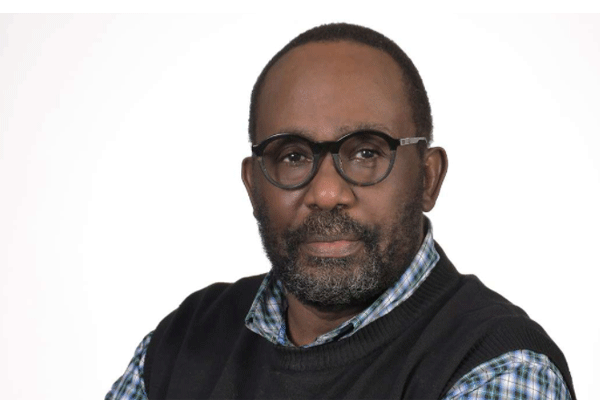Prime
Kampala’s violent birth, and praise for HIV/Aids

Mr Charles Onyango-Obbo is a journalist, writer and curator of the “Wall of Great Africans”.
What you need to know:
And on to Kamwokya-Kyebando, which started life as a cheap labour ghetto to service Kololo, and in later times a soak pit of the rejected and cast out.
DEBUNK, a quarterly magazine of “non-fiction and reportage” launched in Nairobi. In Ugandan terms, consider it a sibling of the wonderful Weganda Review.
There is a meaty offering in it by Ugandan writer and journalist AK Kaiza (aka David Kaiza). If he had been born in 16th-century Europe, Kaiza would have been an enlightened explorer. He’s never learned how to take life less seriously. Restless, questioning, and always poking in dark corners, Kaiza delivers a mind-bending, provocative, and unsettling essay titled “The Violent Birth of Kampala”. It is a snippet from seven years, 2014 to 2021, spent cycling or walking every street, back street, slum, and crossing filthy drains in and around Kampala. The little novel details can blow your socks off.
I won’t spill all, but to skim, he manages to draw a credible line of Kampala as a single story from imperialist military administrator Captain Frederick Lugard, who arrived in present-day Uganda and set up a fort in Old Kampala in 1890, to Sir Apollo Kagwa, Idi Amin, President Yoweri Museveni, and NUP leader Bobi Wine (Robert Kyagulanyi).
With his mercenary army, of Nubian (and Somali) soldiers, Lugard staged one of the first Ugandan landgrabs, setting up shop on then-Kampala Hill without the permission of Kabaka Mwanga II.
It’s obvious, though you wouldn’t ordinarily think of it, but the greater Kampala City grew from today’s Old Kampala. The coastal Arab traders, the first Asians, most of the Europeans, and others who arrived in Buganda at that time crowded into Old Kampala, and most of the “modern” things like restaurants started there. “At its height, Old Kampala had attained the rhythm of a booming bourgeois civilisation”, Kaiza writes.
Old Kampala was then cut off by rivers which in Buganda of the time, marked boundaries between the chief’s territories. To grow and build out a settlement for the colonial administrators, the British set their sights on Nakasero Hill. It was settled by Baganda farmers, and they had to take it and expel them (the role of Katikkiro Apollo Kagwa in that remains unclear, Kaiza says the British did the modern equivalent of forging his signature when he was away visiting England, becoming the first African to be knighted).
The British built six bridges (today they are roads/streets like Ibis Road, Kyagwe Road etc) over the Nakivubo River, to invade and take ownership of Nakasero. “Taking Nakasero was…classic settlerist violence”, he writes.
He had already told us earlier that, “The parallels from Messrs Kagwa and (Yoweri) Museveni coming to power militarily under British support, the idea that ‘Nilotics’ were mortal enemies of the ‘Bantu’ – even though centuries of migration intermarriages had blurred the lines – helped the British destroy Bunyoro Kitara, and Museveni northern Uganda. Neither Kagwa nor Museveni fully understood their own wars.”
On and on, he digs up stuff we have hardly ever read or heard of before, and the troubling and racist dynamics that drove the expansion of Kampala - the Kololo golf course as a barrier to keep native’s diseases from infecting the Europeans - the heroic story of Katwe-Kisenyi (where malls have been built over the bones of the first generation of freedom fighters).
And on to Kamwokya-Kyebando, which started life as a cheap labour ghetto to service Kololo, and in later times a soak pit of the rejected and cast out. “If rural poverty, broken families, migration to the city, exploitation, and disillusionment had bodily form, they would look like Kamwokya”, he writes. The people displaced to build the Northern Bypass, sent thousands more into Kamwokya, and its population exploded.
It became to Museveni’s rule what Katwe-Kisenyi was to the colonial regime - and produced Bobi Wine! Bobi Wine is a repudiation of Kagwa, and colonial Kampala. Kaiza writes controversially that Bobi Wine is, “the first time in history that a commoner from Buganda has risen (in political terms) to greater prominence than the Kabaka…and the first time a Muganda has risen to lead a political movement nation-wide…”
In Kamwokya, he interviews Annita Nakimuli (not her real name) who was thrown out of her matrimonial home and village when she fell ill with HIV/Aids. She ended up in Kamwokya. Catching HIV, she said, was the best thing that ever happened to her. She went to HIV clinics and got into HIV/Aids support networks and training where she learnt tailoring, design, financing, and accounting. Neither the government nor her family had taken her to school. HIV/Aids did.
This “reject” has survived 20 years in Kamwokya, fighting, and gulping ARVs, and has done good. She took her three children through university.
This turmoil, as Kaiza tells it, ends in the “sexual moralising by Kampala’s political elite” against homosexuals. If there was ever a tour de force, this is it. And it all started with the pitching of a tent on Old Kampala hill in 1890.
Mr Onyango-Obbo is a journalist, writer and curator of the “Wall of Great Africans”. Twitter@cobbo3





